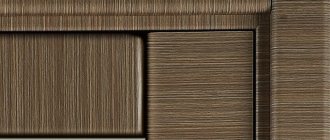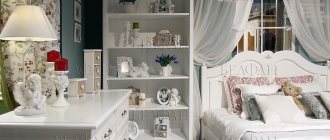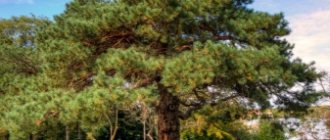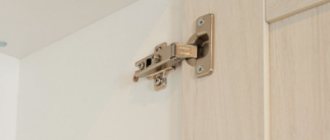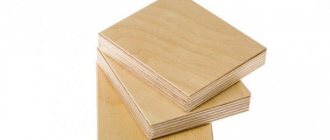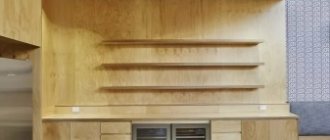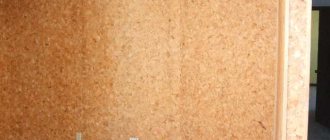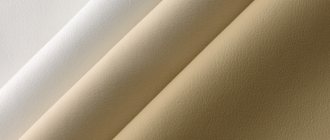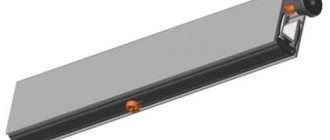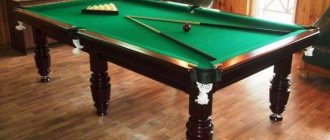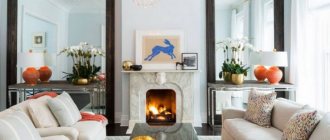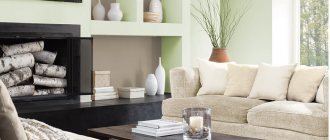Birch is a symbol of our country and there is an explanation for this. Huge forests and tracts of birch groves can be seen in Russia. From time immemorial it was used as lumber, but other times came and this wood appeared before us in a completely different form. Children's bed-sofa made of birch
Today, in carpentry, birch is given special attention. People have learned to work with this material and the scope of use of birch has increased many times over.
For example, in the production of home furniture, birch is a leader among other species. Firstly, its price is much lower than valuable oak or ash, and its average characteristics allow it to be used even in the manufacture of interfloor stairs to residential buildings. Once upon a time, it was only firewood and building material. Now, when ordering a staircase for a home in Barnaul, 80% of manufacturers offer exactly this. However, birch cannot be used in a room with high humidity or a possible change in humidity. Drying birch is unique and does not forgive haste. The use of birch products in damp rooms is extremely undesirable, as it absorbs excess moisture. These disadvantages are far from a death sentence for birch if you understand how many advantages there are. It lends itself perfectly to various types of processing, both manual and mechanized. As a result of planing and milling, a clean surface remains with virtually no chips. If the carpenter has certain skills, the quality of the product can compete with any Italian brand. The flaws are reduced to zero!
Properties of birch wood
Birch is diverse, it has about a hundred species , but only two are used in the woodworking industry - pendulous and pubescent. The trunk can be up to a meter thick and up to 40 meters long.
Birch wood is light and coreless. That is, the border between the core and the sapwood is not visible, it is uniform in color. However, there are cases of the formation of a false nucleus, when with age the inner layers change color to a darker color and become light brown.
Construction birch is quite real. That is, there are trees with straight trunks, but what is its use in construction will be discussed further.
The color of the wood varies from light yellow to light brown, with shades of pinkish and reddish (!more about painting here).
Density varies, but the average for dry wood (12% moisture content) is 650 kg per cubic meter. This suggests that the tree is a medium-dense species.
As for hardness, the data is different everywhere, ranging from 3 to 3.6 Brinell units. This is less than that of oak, but much more than that of linden (of which furniture, windows, doors and shelves are best known) and aspen. Iron birch has a higher hardness, but it is rare and is also rarely used and not in construction.
The hardness of birch is one of the essential, often mentioned properties.
They say that old wood is very difficult to cut with tools. IMPORTANT! However, there is also bad news. The resistance of birch wood to rot is lower the more humid the environment it is used in.
From here you can draw a conclusion about the potential of a birch bath. But take your time! Birch lumber rots most quickly where there is contact with water and/or ground. Moreover, we are talking about untreated wood.
Vegetative propagation
Karelian birch successfully reproduces by layering and shoots. For layering, branches of mature plants that are inclined to the ground or branches that are subject to cutting are used. Sometimes trees sprout new growth. Young annual shoots are better suited for propagation.
Another effective method of vegetative propagation is grafting. Young green shoots of Karelian birch are grafted either onto old stumps or onto young silver birch plants. There are two methods of grafting under the bark or into the split.
Since the 90s of the last century, cloned micropropagation has been considered the most promising method of reproduction.
As a result of this method of reproduction in laboratory conditions, high-quality genetically homogeneous material is obtained, which inherits the properties of the mother plant. This method helps to obtain completely healthy seedlings, free from diseases and more resistant to diseases and pests.
Log, timber, lining
In this article we are not talking about firewood or crafts made from birch, not about industrial use, but only about the possibility of using it in construction. There are few such possibilities: either to be built from logs/timbers, or to decorate the inside of the bathhouse with birch clapboard.
On sale you can find advertisements for the sale of birch beams or rounded logs, they are inexpensive, you can build from them, but only on the condition that you check the entire batch, because this tree has a strong tendency to warp .
ATTENTION! If birch is dried without a press , then warping will occur. Find out the drying conditions and measure the moisture content of the purchased wood - if you have to dry it at home, then only under pressure.
We said above that there is no need to rush to conclusions. You can very well build from timber or logs, but on the condition that you have very good ventilation , and you make internal thermal insulation , and then line the bathhouse with clapboard made of another tree, more resistant to a humid atmosphere.
Of course, one could say that in dry rooms it is possible to line the walls and ceiling with birch clapboard . But we won’t, because the humidity in the bathhouse always increases during procedures, no matter in what room.
ADVICE! It is birch lining that should not be used in a bathhouse. It's good where it's warm and dry, but it's not about a bathhouse.
Returning to the construction of a log house, in advance of treating the logs or timber with an antiseptic and water-repellent compound. In this case, the bath will last longer. But remember that processing must be resumed from time to time.
We have a lot of materials on processing, we recommend you look at: Choosing what to process boards in a bathhouse, Logs for a bathhouse: which is better and how to process them?, Methods of processing and laying timber in a bathhouse.
In general, there is no categorical ban on construction from birch. But in practice it is used only if there are no other alternatives. Because they understand the characteristics of a given tree and take them into account. The birch ax handle behaves just fine. And a building or a fence...
Birch bath: pros and cons
In principle, everything is already clear, but it’s worth summarizing what was said above.
The main advantage of birch is its low cost. This is a common tree that is used mainly in the manufacture of plywood; there is little demand for it from private buyers, so it can be purchased cheaply.
Hardness, unfortunately, does not play a special role, and if it does, it will only be to the extent that it will be difficult to process the wood. Therefore, we will classify it as a minus.
But the biggest disadvantage , of course, is its instability to rotting. In essence, the decay of organic matter is either its decomposition with the help of fungi or bacteria. Wood is decomposed by fungi. food, warmth and to reproduce .
There is an abundance of this in the bathhouse, so protection must be carried out in two directions - you need to make the food (wood) tasteless, that is, soak it in an antiseptic, and you need to ensure that dries as quickly as possible after the procedures, that is, think about ventilation, make it forced if necessary.
All that remains is to weigh your circumstances and decide what is more important to you - cheapness or durability of the building. Include in the cost the purchase of antiseptics and water-repellent impregnations (a separate article is devoted to wood with industrial impregnation).
Living conditions
Grows in northern Europe, in places in Central Europe, Scandinavian countries, Belarus, Ukraine. In Russia in the north of the Karelian Territory, Leningrad, Kaluga regions.
Grows singly or in small groups. Does not form groves. It is frost-resistant and easily adapts to harsh conditions. Not picky about soil types. But “Karelka” is a light-loving plant, so it experiences great difficulties in the shade of other trees.
Reviews
But there were a lot of reviews about the birch bathhouse online. The overwhelming majority of respondents say that is not suitable for bathhouse construction. They agree that it is possible to build only when there are simply no other options.
As an example of successful construction, they often talk about houses in Northern Kazakhstan, built from birch and withstanding prolonged exposure to precipitation. But they add that there is nothing left to build there.
You can also often find references to the fact that I didn’t build, but someone from a relative there, or from a neighboring village, built a house/bathhouse/garage made of birch, and it has been standing for many years, and this building has not been protected from rain and snow done. Since in this case we are not talking about your own construction, you should treat it with a grain of salt - who knows what the real problems are.
There are also references to the most problematic places - they are under the windows, as well as where there is contact with the ground, but this is more about fences.
We were also interested in the mention of a fungus, against which birch is most defenseless. Its Latin name is unlikely to be needed, but the fact that this mushroom smells like violets is valuable information. If you notice this smell coming from your tree, it's time to look for a quality fungicide.
Application
Karelian birch is valued for its unusual wood properties, largely due to its twisted pattern and technical characteristics. It is considered one of the strongest and hardest wood species. Therefore, the products are perfectly held by fastening mechanisms. Wood responds gratefully to polishing and varnishing.
Even in the last century, furniture was made from it. Now that mass logging is prohibited, veneer is used in furniture production. Products made from “karelka” look luxurious: boxes, chess sets, knife handles, musical instruments.
